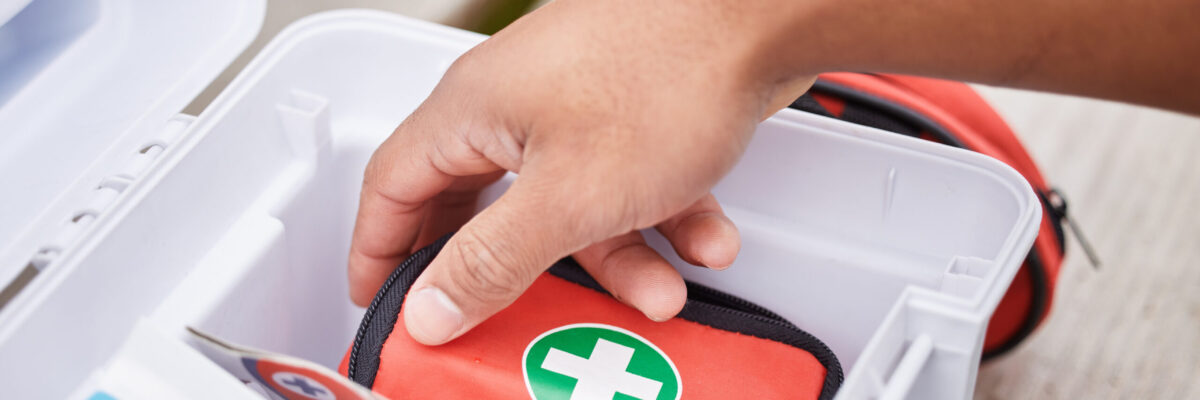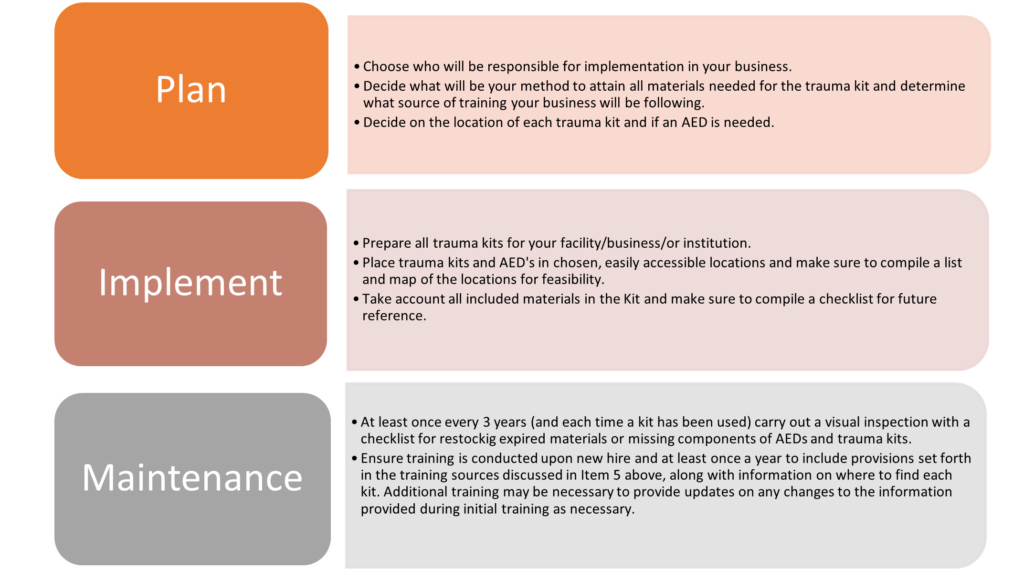Sharee Lopez, MPH, EHS Specialist (EHS & Air)
Assembly Bill (AB) 2260 was passed on September 9th, 2022, and is well supported by medical professionals, such as the American College of Surgeons (ACS) and the California Medical Association (CMA), which will require at least 6 Trauma Kits/ First Response Kits to be installed in newly constructed public and private buildings in California. The bill will be effective January 1st, 2023 and applies to construction of new buildings on or after January 1st, 2023.
This bill will require the implementation of at least 6 trauma kits in each building, which includes an inspection requirement of every 3 years, replacing expired or missing contents of the kit, and restocking after each use when property management has been made aware of use. Additionally, property management has a responsibility for notifying tenants of the building (at least once per year) of the location of the trauma kits, as well as providing contact information for training on its use. This requirement does not apply to structures that are vacant, renovated, or under construction. In addition, occupied structures that are not owned or operated by any local government entity and were constructed on or after January 1st, 2017, must have an automated external defibrillator (AED). If an AED is rendered necessary, the trauma kit must be placed next to an AED. AB 2260 exempts a person or entity from liability for civil damages resulting from failure, improper operation, or malfunction of equipment or materials within a properly stocked trauma kit, according to the Health and Safety Code 1799.2 of the Good Samaritan Law.
How do you know if this bill will affect your tenants, businesses and facilities? This can be described based on a structure classification of a group which resembles the maximum occupancy (See Table 1 below). The occupancy amount reflects regulations and standards of fire safety and hazards that may be involved relative to the building. The bill indicates that 6 trauma kits apply to the following occupancy amounts based on the following building descriptions:
- Group A: Assembly buildings with an occupancy of greater than 300.
- Group B: Business buildings with an occupancy of 200 or more.
- Group E: Educational buildings with an occupancy of 200 or more.
- Group F: Factory buildings with an occupancy of 200 or more.
- Group I: Institutional buildings with an occupancy of 200 or more.
- Group M: Mercantile buildings with an occupancy of 200 or more.
- Group R: Residential buildings with an occupancy of 200 or more, excluding single-family and multifamily dwelling units.
As part of the installation of the trauma kits, there is a requirement to include at least one source of instructional documents described in item 5 below. The following are items that must be included in the trauma kits at a minimum:
- One tourniquet endorsed by the Committee on Tactical Combat Casualty Care.
- One bleeding control bandage.
- One pair of nonlatex protective gloves and a marker.
- One pair of scissors.
- Instructional documents developed by the Stop the Bleed national awareness campaign of the United States Department of Homeland Security or the American College of Surgeons Committee on Trauma, the American Red Cross, the Committee for Tactical Emergency Casualty Care, or any other partner of the United States Department of Defense.
- Depending on your facility/institution/building, the requirements for emergency response trauma safety may demand additional components in your trauma kits. You must contact the medical director of your local emergency medical service agency for approval of any additional medical materials that you find may be useful to the civilians in your business to adequately treat a traumatic injury.
Suggestions on how businesses can implement AB 2260 in three steps:
Do you need assistance with the three steps of planning, implementation and maintenance? We encourage you to choose to stay ahead and let us help you prepare for AB 2260 with specific guidance for your building. Please do not hesitate on reaching out to us at 562.495.5777 or Environmental@NV5.com for help creating an action plan to guide you on your way for successful implementation.


